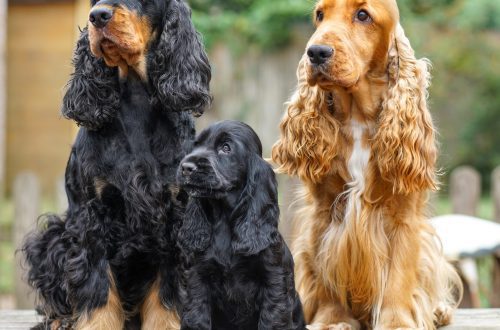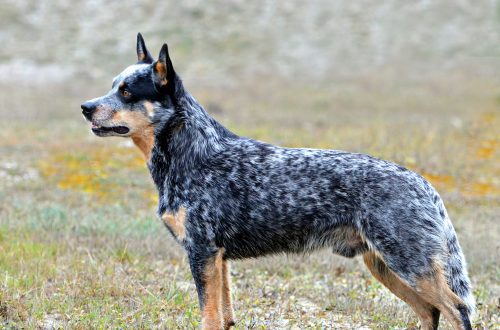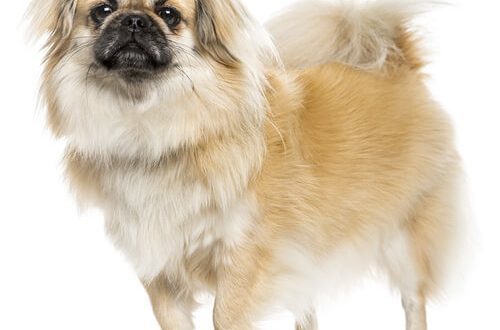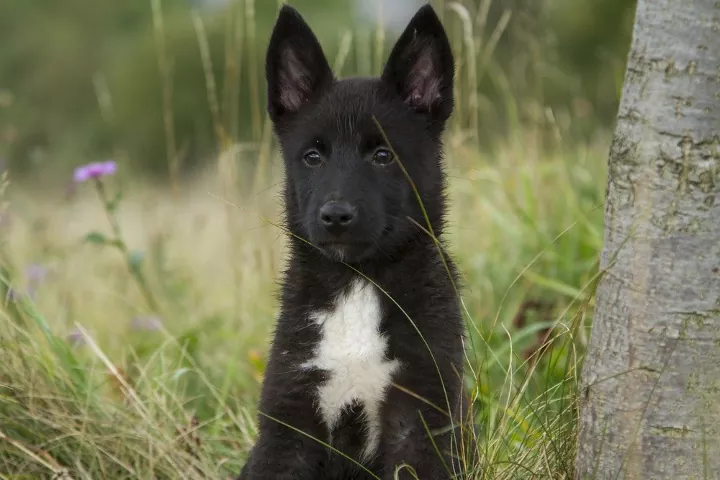
Russian-European Laika
Other names: REL
Russian-European Laika is a factory breed of hunting dogs of black, white and black and piebald colors, bred on the basis of Komi Laikas. Among cynologists, it is considered a universal working breed capable of extracting both game and furs.
Contents
- Characteristics of Russian-European Laika
- Basic moments
- The history of the Russian-European Laika breed
- Breed standard Russian-European Laika
- The nature of the Russian-European Laika
- Hunting with Russian-European Laika
- Education, training, grooming
- Maintenance and care
- Health and diseases of Russian-European huskies
- How to choose a puppy
- The price of the Russian-European laika
Characteristics of Russian-European Laika
| Country of origin | USSR |
| The size | Average |
| Growth | 48–58 cm |
| Weight | 18–23 kg |
| Age | 12–14 years old |
| FCI breed group | 5 – Spitz and breeds of primitive type |
Basic moments
- The owners of Russian-European Laikas changed the breed abbreviation “for themselves”, calling their wards simply relki.
- This is one of the few varieties of huskies, whose representatives can be kept in a city apartment.
- In Russia, there are several breeding lines of the breed, each of which has its own specific features both in terms of exterior and performance.
- All RELs are very attached to a person and are able to get bored even in those cases when they are separated from only one of the family members. Complete loneliness, albeit short-term, breaks the animal’s psyche.
- The breed has a sharpened hunter’s instinct, so it is easily trained on any animal, including all types of game.
- Laikas regularly hunting are indifferent to livestock and poultry, so you don’t have to worry about the life of the inhabitants of the peasant farmstead. The exception is teenage puppies who love to work out working techniques on all representatives of the fauna.
- You should not buy a Russian-European husky if you do not plan to go hunting with it. Walks in the park and sports will not be able to close the dog’s need for movement.
- The main competitor of the reel is the West Siberian Laika, which modern hunters consider to be a more prey and unpretentious breed.
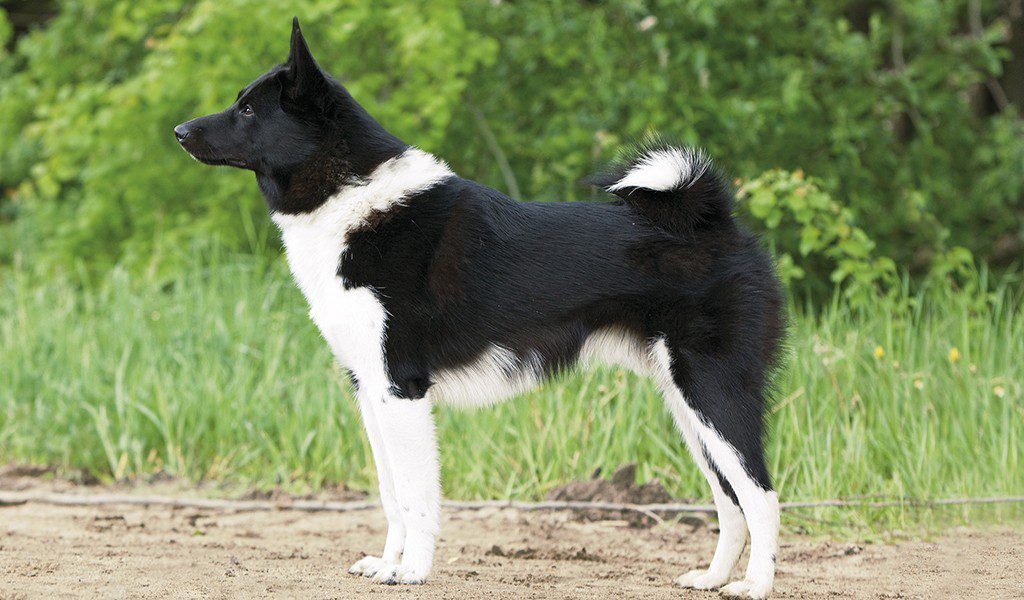
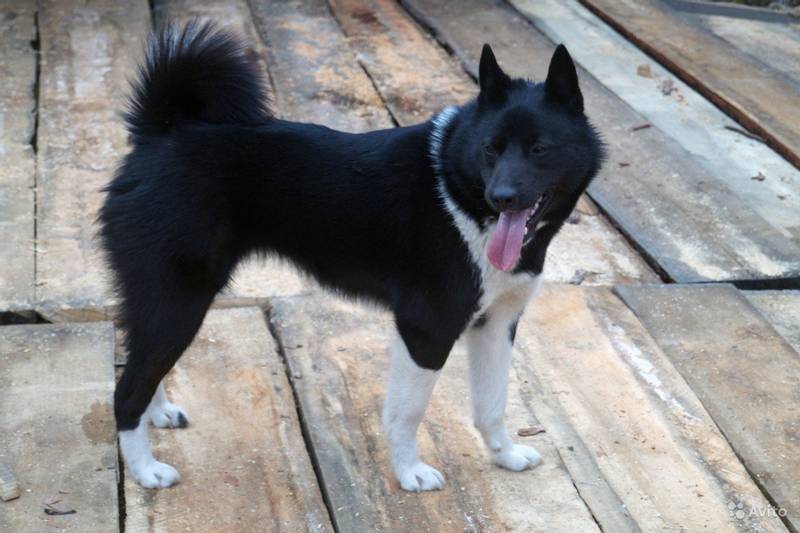
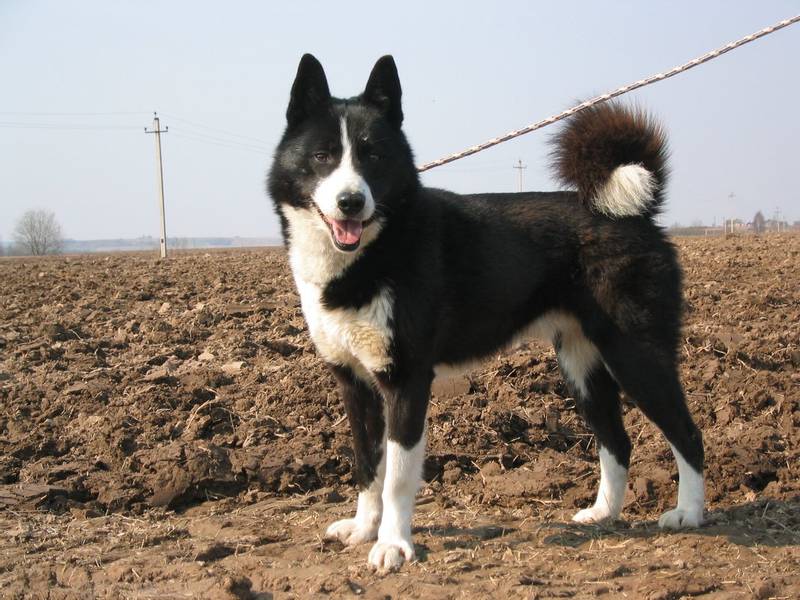
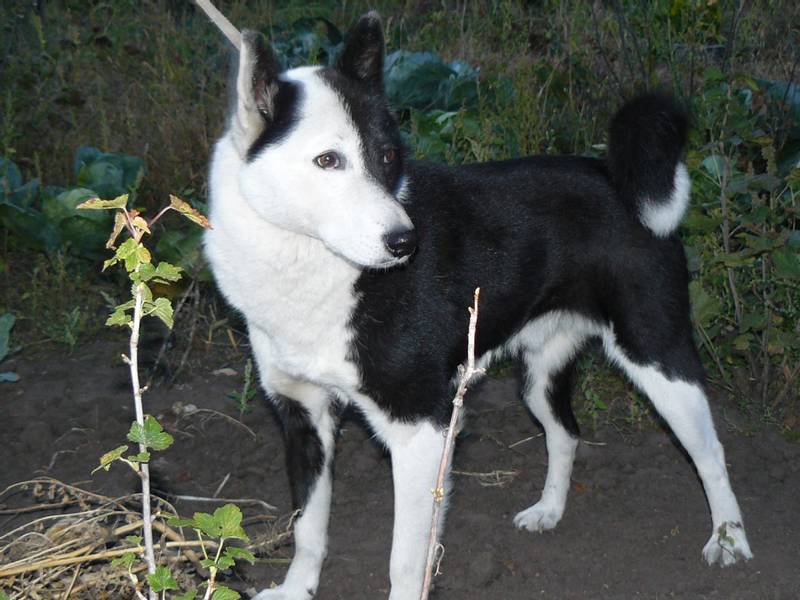
The Russian-European Laika is a sociable universal huntress who adores children and willingly devotes all her free time to playing with them. Possessing outstanding flair and sharp hearing, reels will become indispensable assistants in cases where hunting turns from a hobby into a passion. At the same time, the breed does not require much for itself and easily adapts to the most modest conditions of existence, preferring constant interaction with a person, and preferably with a large family, to domestic comfort.
The history of the Russian-European Laika breed
The Russian-European Laika, as an independent breed, was created according to plan. In 1949, Soviet breeders decided to give the hunters another kind of hunting dog, based on the gene pool of the Karelian, Arkhangelsk, and Komi-like. However, the most difficult thing for specialists was not to cross individuals from the listed offspring (such matings have long been practiced by amateurs), but to bring the resulting offspring to a single type. As an example: by the middle of the 20th century in the USSR, there were about ten varieties of Russian-European Laikas, which had a very remote resemblance to each other.
One of the very first and prolific participants in the experiment is a dog named Tuzik, owned by the breeder Sh. A. Isaev. This native of the Komi Laika helped to give birth to dozens of Russian-European Laika puppies, in fact becoming the official great-grandfather of the breed. As for the formation of a single exterior, it happened only by 1964, although work on individual breed lines continued until perestroika times. It is known, for example, that the most popular branches of Russian-European Laikas descended from the males Putik, Bublik and Sharik, and their representatives received excellent external indicators and developed hunting instincts from their ancestors.
From the beginning of the 70s, new breed groups of Russian-European Laikas began to appear. These are the lines of Jack and Joy known to all modern breeders. Unfortunately, already in 1979, the breeding of hunting huskies lost its popularity, which was facilitated by the state ban on shooting squirrels. And although by that time the breed had made a good show career, and even received FCI registration a year later, this fact had a negative impact on its development. Today, you can meet the Russian-European husky on the hunt less often than its relatives, the Westerners. However, the fans of these versatile fishermen remained, which helped them not to disappear, and also to maintain their performance characteristics.
Video: Russian-European Laika
Breed standard Russian-European Laika
The Russian-European Laika has a very memorable appearance, which is partly due to the meager palette of colors. The dimensions of the representatives of the breed are medium, the muscles are dry, while the dogs do not look thin-boned. The height of an adult male Russian-European husky is 52-58 cm; females – 48-54 cm. In general, “girls” have a more elongated silhouette (extension index in the range of 100-105), since this feature of the constitution is necessary for bearing offspring. Otherwise, males look brighter and more solid than females, although they do not show significant advantages in work.
Head
Wedge-shaped outlines are typical for the heads of all Russian-European Laikas. Between the dry, sharp muzzle and the skull, a stop is noticeable, which seems very sharp due to the convex brow ridges. The muzzle itself is shorter than the skull, while its upper line is parallel to the line of the forehead. The nape of the rela is rounded, with an easily palpable tubercle and parietal crest.
Lips, teeth and jaws
Elastic lips tightly pressed to the jaws do not form flails. The teeth are massive, even, closely spaced in a row. The only appropriate type of bite is scissors.
Russian-European Laika Eyes
The Russian-European Laika has dark brown small eyes, which are characterized by a slightly oblique slit of the eyelids.
Ears
The shape of the ear is triangular, while the base of the ear is wide, and the tip is sharp. The ear position is upright. The ear canopy is small and highly mobile.
Neck
The optimal proportions are when the length of the neck and head of the animal are of the same value. To the touch, the neck is very muscular, dry in outline, set in relation to the body at an angle of 45 ° to 50 °.
Frame
Russian-European Laikas are dogs of moderately strong build with a broad chest that goes down to the elbows and a straight but not long back. The loin of the animal is convex, with a developed muscular corset. Belly with a clearly defined transition from the sternum to the abdomen. The croup zone is rather short, with a slight slope.
limbs
REL’s legs are dry, with well pumped up muscles, located parallel to each other, if you look at the animal from the front. The shoulders are moderately sloping, the processes of the elbows are large, directed backwards. Pasterns of medium size, have a slight slope.
The hind legs are formed by long tibiae and almost sheer metatarsus. The paws are in the shape of a regular oval, thanks to the fingers compressed into a ball. The presence of dewclaws is not welcome.
Tail
The tail of the husky is in the form of a crescent or a ring, curved towards the back and pressed against the outer side of the thigh. When unfolded, the tail reaches the tarsal (hock) joint or is located at a distance of 1-2 cm from it.
Russian-European Laika Wool
The coat of the Russo-European Laika is a hard, straight awn and a thick undercoat. The dense hair covering the head and ears of the dog is very short. The shoulders and neck are “dressed” in a rich awn, forming an expressive “collar”, and behind the cheekbones – stylish “sideburns”. Males have longer hair at the withers. The hair on the legs is short, close fitting, slightly elongating only on the back of the legs. There are neat featherings on the hind legs. Between the fingers, the hair sprouts with a thick brush, while the paws are covered with short and smooth hairs. The tail is without dewlap, but with an elongated straight awn on the lower part.
Color
Russian-European Laikas are born black and piebald, completely white, and also with a solid black color.
Possible vices
Serious flaws in the exterior, for which the exhibition score is reduced, are called vices. In Russian-European Laikas, these include:
- deviation from the growth fixed by the standard by more than 2 cm;
- specks on the body, as well as specks that do not match the main suit on the legs and head;
- coat with collapse, wavy or curly;
- long head, massive muzzle without stop;
- hanging or semi-erect ears;
- disagreement;
- hunchbacked back and barrel-shaped chest;
- clubfoot or splayed legs;
- straight or saber tail.
The nature of the Russian-European Laika
The Russian-European Laika is a dog in love with the owner, and at the same time with all his close associates, starting with family members and ending with friends. Representatives of this family, in principle, are not prone to aggression against humans, and when it comes to children, huskies immediately turn into the most good-natured and forgiving creatures in the universe. The territorial instinct of the breed is developed very moderately, so the guards from its representatives are mediocre. Nevertheless, individual breeders specifically cultivate protective qualities in their wards. Such individuals are noticeably more suspicious than relatives and are no longer so loyal to strangers. If you need a dog that can be involved not only in hunting, but also in a simplified version of the ZKS (protective guard service), look for a seller who specializes in breeding sentry huskies.
The main weapon in the fight against suspicious guests, which is available in the arsenal of every Russian-European husky, is a boisterous bark. By the way, about the “vocal data” of the breed: REL are happy to give voice with or without reason, and especially piercing concerts are arranged by bored individuals. Accordingly, if you keep a Russian-European husky in an apartment and often go away on business, get ready to ruin relations with neighbors who are forced to be unwitting listeners of your pet’s musical exercises.
The patience of Russian-European Laikas has become something of a legend, so a properly educated dog will always allow the owner to pull a bowl of food out from under its nose and suppress any reciprocal protest. At the same time, relks are sensitive to unfair punishment, so before you slap your dog on the nose with a newspaper, think carefully about whether the pet deserves such treatment. Consider also the needs of the breed in physical activity. If the Russian-European Laika does not go hunting for a long time and at the same time lives in the house, the destruction of the interior is inevitable. And the point here is not in the obstinate nature of the relok, but in natural instincts that do not find application in everyday life.
Hunting with Russian-European Laika
Russian-European huskies are universal hunters, in Russian realities they work perfectly both for game and for any animal. In addition to instinct, the breed uses sight and hearing in the search, which makes hunting with reels as productive as possible. In addition, Russian-European Laikas are distinguished by the breadth and speed of their search, which help them compete successfully with Westerners. A very important nuance: different methods of working with game and animals, found in representatives of different breed lines. Usually, most relocks work with their lower senses, following the trail directly, and only occasionally using auditory receptors.
Some of the huskies belong to the apex type, that is, they are guided by the smell coming from the ground and distributed by the lower layers of the air. Moreover, under different conditions, the dog can change the technique of reconnaissance, moving from the upper scent to the lower and vice versa. A separate category of REL is hunting by ear. Sensitivity in such individuals is slightly less developed, therefore, in the process of pursuing prey, the animal often stops, then runs towards the sound, and only in the final barks the prey. For all counts, spirit huskies are considered ideal hunters, having equally developed sense of smell and hearing, but there are much fewer such individuals, it is difficult to find them.
Some experts recommend specifically training your pet’s hearing, starting from puppyhood. Laika is taught to listen to the whisper of the owner, to pay attention to the sounds of wildlife – the cries of birds, the knock of a woodpecker on a tree. However, such exercises do not always give the desired result, since individuals with a dominant sense of smell will still prefer to rely on their nose rather than their own ears.
Education, training, grooming
The training of the Russian-European Laika is based on helping the animal to become a professional hunter of forest and field trophies. The rest of the service commands are discarded. At the same time, with a pet living in urban realities, you can take a UGS course (managed city dog). True, according to experienced hunters, such an “education” does not have the best effect on the instincts of the breed. As a result, dogs trained in service commands work an order of magnitude worse.
You can look after a future hunting husky from the age of three months, regardless of the time of year. Start with short walks in the woods and try not to make any noise so that the puppy can listen to new sounds. The technique of courting also depends on the type of animal and game to be hunted. For example, to work with a waterfowl, you need to teach a puppy to overcome the fear of water. It is better to look after the Russian-European husky on the hazel grouse in the fall and in those forests where the feathered young growth definitely lives.
Important: Russian-European huskies, who have lived in city apartments for years and go hunting only once a season, can lose their sharpness of instinct. Usually the sense of smell is restored in the process of work, but this does not happen immediately.
Mandatory skills for hunting huskies: walking next to the owner, readiness to sit down and serve the object on command, including from the water. Breeders recommend organizing the learning process with the help of additional equipment: a 20-meter leash with a carabiner, a one-color whistle, and diarrhea (a piece of wood or a soft cloth toy). It is permissible to use a thin rod when practicing the “No!” command. The traditional scheme: a dog caught picking up food from the ground is held at the “scene of the crime” and whipped sharply, but not too hard, with a vine. If the rod was not at hand, it is useful to pull the leash and voice the command. At the same time, it is strictly forbidden to beat the Russian-European husky with a hand or a leash.
By the age of six months, a Russian-European Laika puppy is usually socialized: he knows his nickname and responds to it, he is used to walking on a leash and fits into the hierarchical system of the family in which he lives. At 6 months, the animal can be prepared for hunting and trained. The first command to be studied is “Near!”. The owner takes the Russian-European Laika outside, gives the order, patting his thigh and at the same time pulling the puppy to him by the leash. The strap is then gently released and the pet receives a rewarding stroke or treat. By the way, for the latter it is better to buy a waist bag. Over time, the husky will understand where the owner hides treats, and will try to earn them.
When the Russian-European Laika learns to walk side by side, start practicing the “Sit!” command. Everything is traditional here: after the order, the pet is gently pressed on the sacrum, forcing it to fall on its hind legs. In parallel, the puppy is taught to properly feed the diaper. The scheme is simple: shake the animal in front of the nose with a cloth scarecrow. When the pet starts grabbing the object with its teeth, throw it forward with the “Give!” command, and after the husky picks up the stuffed animal, gently take it away, rewarding the puppy with a treat.
If you plan to go to waterfowl, teach the Russian-European husky to swim. Only without extreme sports: throwing a puppy into the water, as home-grown “pros” do, is a harmful and empty activity that will provoke hydrophobia in the animal and nothing more. It is better to start by crossing shallow water bodies (the owner goes first, followed by the puppy) and only in the warm season, since dogs also need time to get used to and harden. As for grafting on a large animal, it can be practiced at stations and with individuals not younger than 1 year old. And of course, take into account the individual characteristics of your own pet: some likes are not vicious enough for such an activity and are often afraid of potential prey that surpasses them in size.
Maintenance and care
Despite the growing popularity of apartment keeping of Russian-European Laikas, a spacious aviary, facing the south side with a lattice and equipped with a warm booth, remains the ideal housing for the breed. The obligatory “walking minimum” for the Russian-European husky is from 2 to 3 hours a day, and it does not matter at all where your pet lives – in an apartment or in the yard of a country cottage.
Do not be afraid of the destructive behavior of Russian-European Laikas living in houses. If the dog is walked and hunted enough, it will not cause chaos. The exception is puppies, tasting the world around them, but a compromise can be found with them. Provide your puppy with enough toys and treat him often with cartilage and flat bones so that the baby has something to occupy his teeth.
Hygiene
Care for apartment and aviary likes will be different. The former, as a rule, are dressed poorer, because they live in warmth, therefore, such individuals freeze faster during winter hunting. Apartment Russian-European huskies shed throughout the year, so combing your pet several times a week will save your home from woolen balls. Aviary dogs shed their “fur coats” seasonally, that is, twice a year, which significantly saves the owner’s strength. Theoretically, yard huskies need to be combed only during the molting period, but in practice this has to be done much more often, especially if the animal often goes hunting, where it can fasten burrs.
Important: Russo-European Laika puppies should not be washed. Bathing is allowed only for adult dogs, and only in cases where it is really necessary.
The ears of Russian-European huskies are cleaned as they get dirty with hygienic drops and a piece of clean cloth. If there is a small amount of sulfur in the funnel, do not disturb the pet in vain: the husky is not a decorative dog that needs to be washed and combed endlessly. The eyes of the breed are healthy, so special care is not required for them. Simply brush away dust from the corners of your eyelids and cleanse your eyes with chamomile infusion and a tissue once a week.
Weekly remove accumulated plaque from the dog’s teeth: you can do this with a toothbrush or a silicone nozzle on your finger. An alternative to classic cleansing is hard treats like veins, as well as carrots and tomato juice. During the hunting season, special attention should be paid to the legs of the Russian-European Laika. If scratches or cuts are found on the paws during examination, treat the wounds with an antiseptic. In winter, it is useful for urban huskies to lubricate the pads of their paws with protective creams that will protect the skin from poisonous road reagents.
Russian-European Laika Feeding
Russian-European huskies are often fed livestock they have caught. The only nuance of such a menu: from helminths, a dog that eats hunting trophies will have to be treated more often. If work in the forest did not work out, the pet’s diet is based on any lean meat (from beef to poultry), raw tripe and offal. Once a week, meat can be replaced with fish fillet. In order to “cheapen” dog meals a little, cereals are also added to them – buckwheat and rice.
It is useful to dilute the meat component with seasonal fruits, young herbs, and vegetables. Russian-European huskies will not refuse fermented milk products either, so get ready to periodically buy low-fat kefir, cottage cheese and fermented baked milk for your pet. To improve the appearance and thickness of the coat, it is recommended to treat the dog with a teaspoon of unrefined vegetable oil – it can be sunflower, olive or linseed oil.
Health and diseases of Russian-European huskies
In purebred huskies, there are practically no hereditary diseases, with the exception of hip dysplasia, the mechanism of which is not yet fully understood. At the same time, you still have to monitor the health of the pet, given its active lifestyle. For example, RELs are often injured while hunting and can pick up various infections there. Treatment of representatives of the breed from ectoparasites, as well as anthelmintic drugs during the hunting season, is carried out without fail. Sometimes Russian-European Laikas are diagnosed with epilepsy and urolithiasis. In addition, some individuals may develop food allergies, which are quite realistic to deal with through a properly formulated diet.
How to choose a puppy
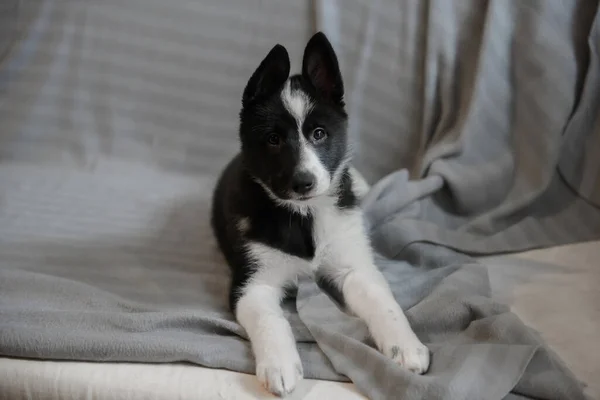

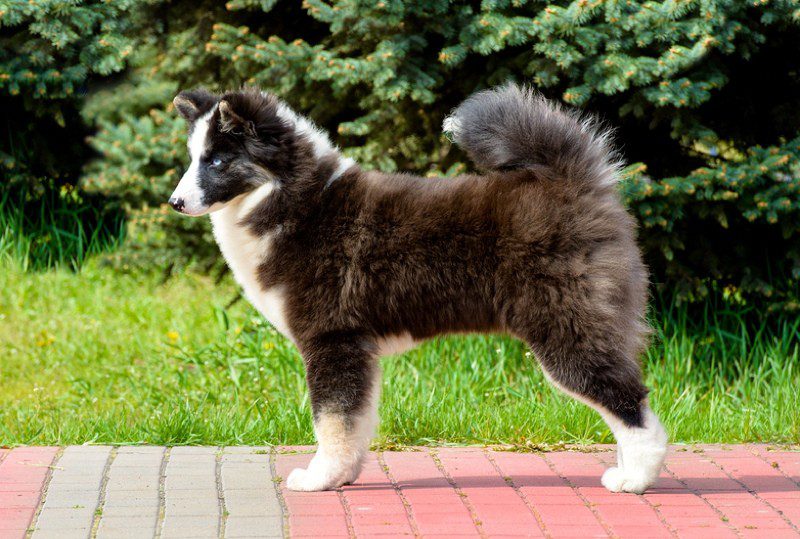

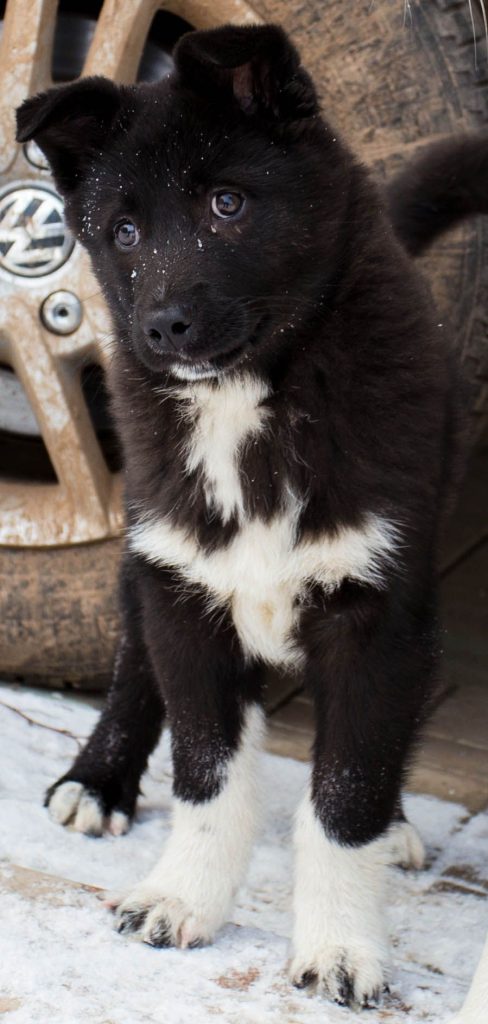

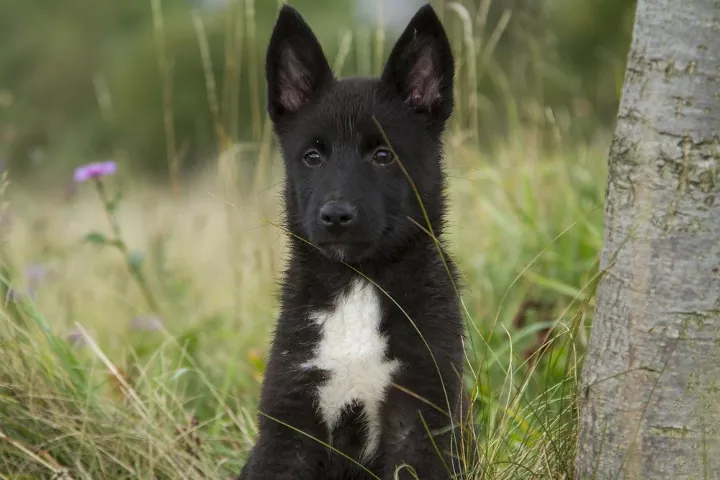

- Gather as much information as possible about the litter sires: availability of show certificates, pedigrees, conformation, tests for genetic dysplasia.
- Do not look for show puppies from breeders who breed purely working lines and vice versa. Hunting huskies will never have such a glamorous exterior as their show counterparts, and show dogs are not as prolific in hunting.
- Choose a female Russian-European husky if you are going to “work furs” – when hunting for squirrel and sable, “girls” are always more collected and prudent.
- For hunting a wild boar, it is better to opt for males – they are more reckless, meaner and an order of magnitude bolder than females.
- If the seller did not provide a certificate of examination of the litter, it is very likely that there are mestizos in it, because of which the breeding commission refused to issue documents to the breeder.
- Try to visit the kennel in advance so as not to pick up the last remaining puppy. Evaluate the entire litter: ideally, if all the babies are about the same size.
- Maximum attention is given to the shape of the head and bite of the puppy, since it is these exterior indicators that determine the breed of Russian-European Laikas.
- It is not recommended to take the most dominant puppy in the litter: having matured, such a reel will try to lead in hunting and in everyday life.
- Test the hearing acuity and sensibility of Russo-European Laika puppies before buying. Click your fingers above the little ones’ heads and see which one reacts first to the noise. The scent is tested with a bowl of food placed away from the animals. The puppy that smells the treat first will be the most scented in the litter.
- When buying an adult dog with a show diploma, pay attention to how it behaves in the ring. If the pet does not go near the owner and barks at everyone angrily, hunting with such a dominant will not be successful.
The price of the Russian-European laika
It is easy to buy a Russian-European husky within the Russian Federation, and for quite modest money. It is already more difficult to buy a purebred REL with club documents. The fact is that most hunters do not see anything wrong with knitting their wards with representatives of other breeds or even mestizos. Accordingly, it will no longer be possible to go to an exhibition with such a dog.
The most expensive offer on the market is adult Russian-European huskies with working or exhibition diplomas and a decent pedigree. The cost of such dogs can range from 500 to 1600$. A club puppy from good producers “pulls” 150 – 250$. As for mestizo babies, they can often be obtained for free or for a symbolic price. True, no one will guarantee the safety of hunting instincts in such animals.





